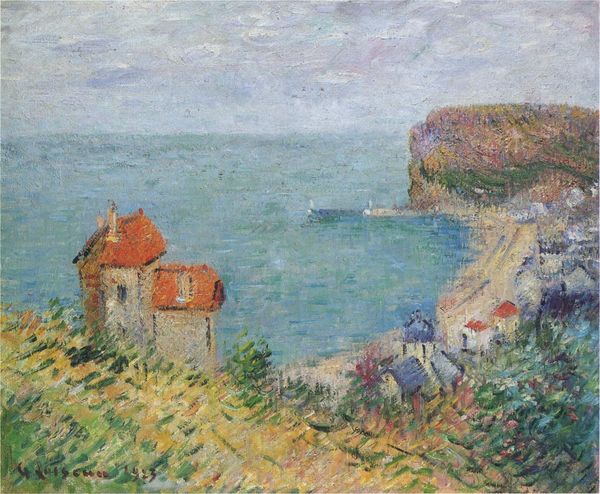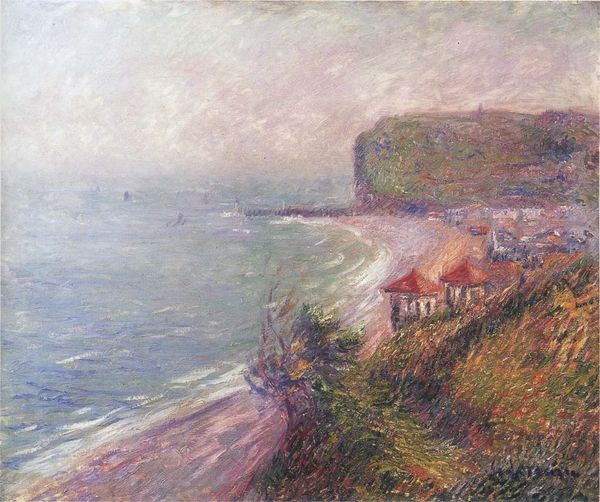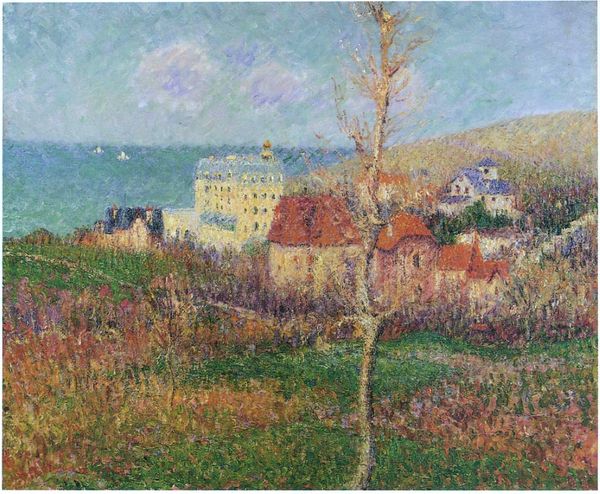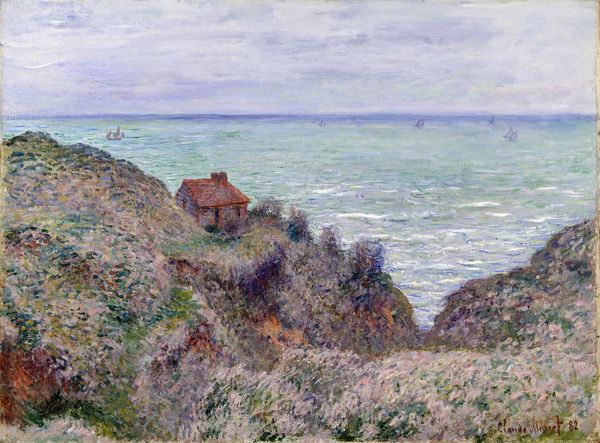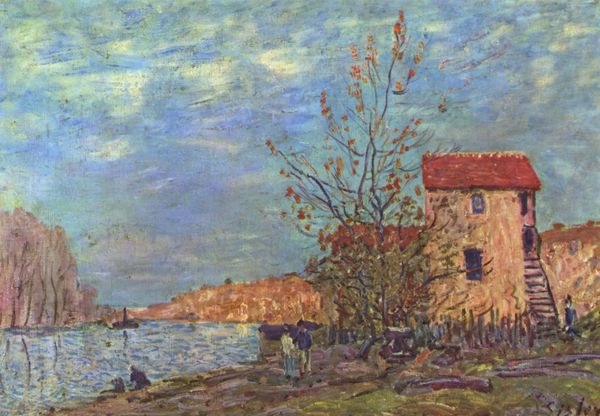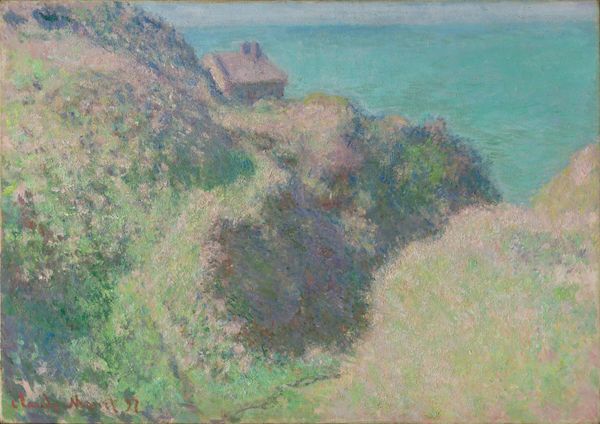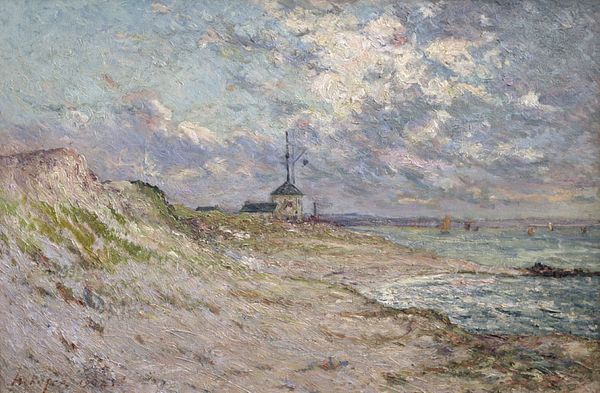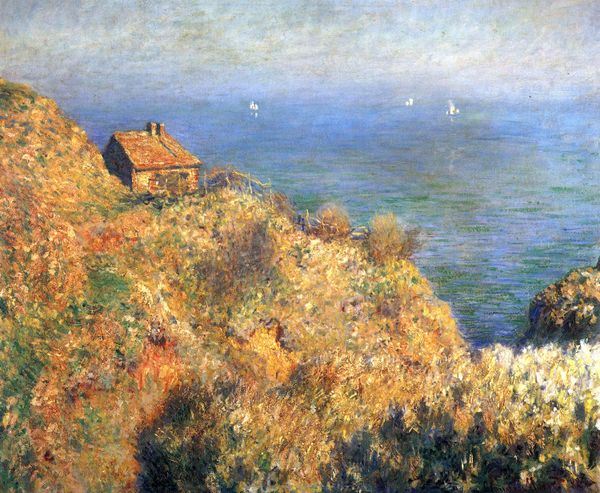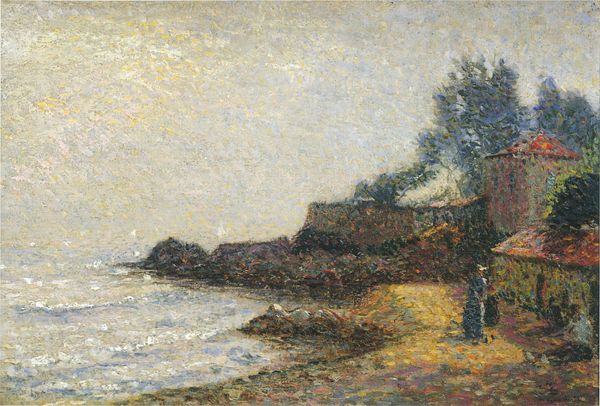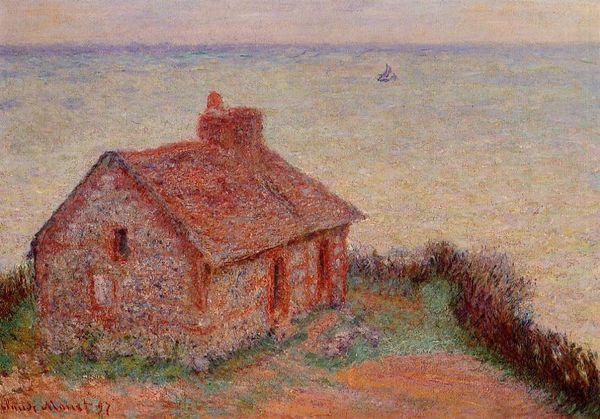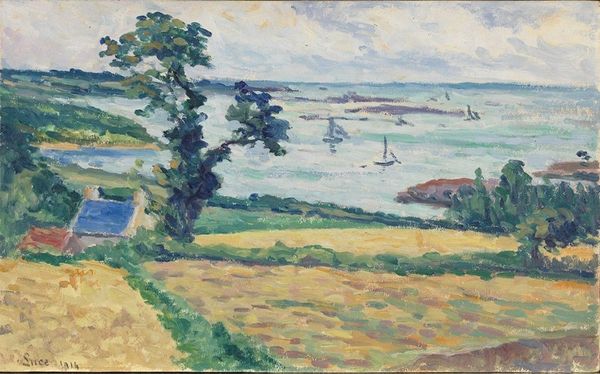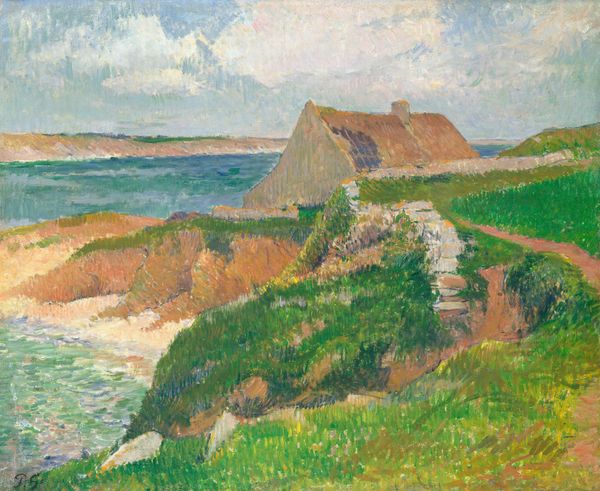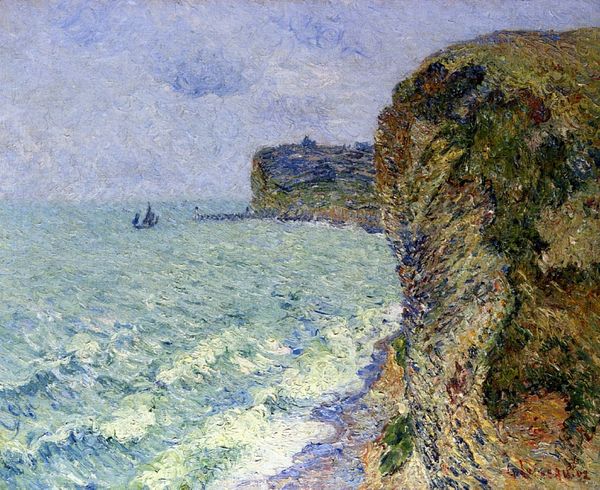
Copyright: Public domain
Editor: Gustave Loiseau's "Fecamp, Gray Weather," painted in 1920, is such an evocative oil painting. The muted colors and blurred details create a really melancholic mood for me. What do you see in this piece? Curator: Beyond its aesthetic appeal, I see Loiseau engaging with questions of representation and historical narrative. Post-World War I, the "Fecamp, Gray Weather" cityscape can be understood as a symbolic space where the trauma of the war lingered in the atmosphere, impacting even idyllic scenes. How do you think the "gray weather" affects our understanding of that historical period? Editor: That's a great point. I was just focused on the visual elements. The gray weather almost feels like a veil, obscuring a clear view of the world, literally and figuratively. It hides details. Curator: Exactly. The blurred boundaries and lack of distinct detail resonate with the widespread sense of uncertainty that shaped social consciousness during this era. In many ways, his portrayal isn't just an artistic representation, it's also an act of cultural commentary, isn't it? The fog obscures; what do you make of that as metaphor, politically? Editor: That’s interesting…maybe the fog also suggests a collective forgetting, or even a willful blindness to the realities of war? Maybe this scene critiques how easily society moves on? Curator: Precisely. So considering those concepts, this artwork opens an important dialogue about how we understand the relationship between artistic expression, memory, and historical representation. Editor: Wow, I’ll definitely see Loiseau's work with a different understanding going forward. Thank you.
Comments
No comments
Be the first to comment and join the conversation on the ultimate creative platform.
